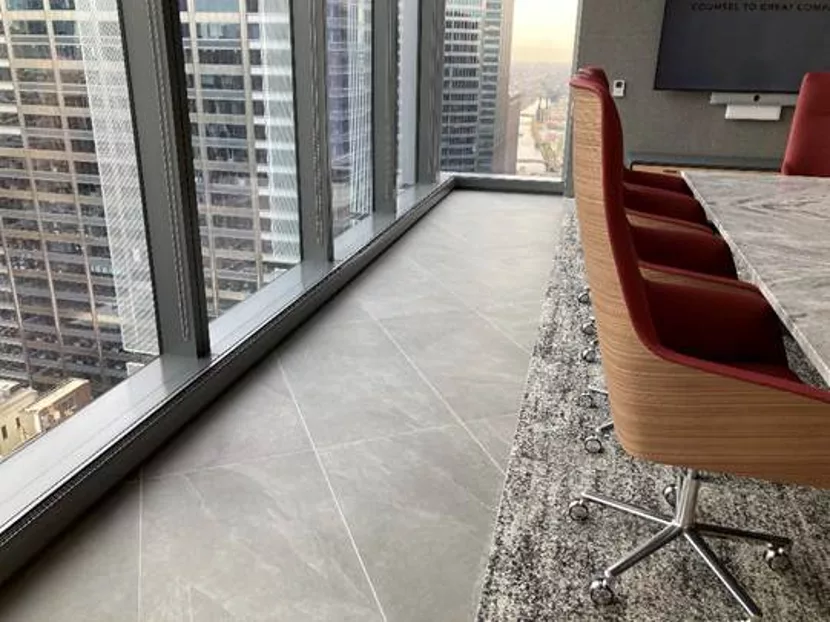The 2022 Jim Herring Memorial Silver Fox Award was presented to David Molk of Thomas Sales & Marketing Inc., based in Bedford Park, Illinois, for the Riverside Developments heating convectors project. This first-ever annual honor was announced at Marley Engineered Products’ recent national sales meeting and is dedicated to the company’s dear friend and colleague, Jim Herring.
The Jim Herring Memorial Silver Fox Award honors the outstanding work completed by Herring, known affectionately as the “Silver Fox” during his 33 years of dedicated service to Marley and the electric heat industry. The award is modeled after the creative customer solutions Herring helped design for specialized applications utilizing Marley’s standard and custom heating and ventilation products.
“This award for excellence in solution design embodies the spirit of Jim Herring, who was always up for a challenge and most happy when solving a unique heating or ventilation problem,” said Fred Gump, director of sales with Marley Engineered Products. “Our inaugural winner found an innovative way to solve a complex customer problem that truly captures Jim’s talent for finding creative solutions.”
The award-winning project, submitted by Molk, a manufacturer’s representative of mechanical and electrical products, consisted of linear wall-to-wall convectors at three buildings in Chicago: 150 N. Riverside, 110 N. Wacker and 320 S. Canal St.
Project Details and Challenges
The project began with the client requesting SLQDB Series convector heaters installed at 150 N. Riverside on the perimeter curtain wall, which consisted of floor-to-ceiling 12-foot windows. The challenge came from the architectural nature of the project and the need for available floor space in this 10-floor buildout. The client preferred not to see a pedestal mounted convector for aesthetic reasons, nor did they want to lose the 6 inches of floor space along the perimeter to a heater. Over the buildout, that would have been a loss of more than 5,000 square feet of space.
Another challenge: the heater could not be wall mounted to the curtain wall, as it would require drilling into the window mullion, which would void the warranty of that window system. Additionally, the level of the curtain wall/lower sill ranged between 6 and 10 inches, constantly changing throughout the floor, and the heater needed to be mounted level with the window sill and match the color of the curtain wall.
The solution was the development of a custom bracket, custom length heaters, custom colors, infield cutting/miters, and the use of several electricians.
The bracket design was the main challenge and went through many variations. The first design was a C-shaped, two-part bracket, with a bolt and washer locknut, in which the heater would sit on top of the bracket while set screws would be used to level the heater. However, the final iteration was an L shaped bracket with a 6 to10-inch vertical and a 4-inch lower leg with a custom color to match the curtain wall. This design ended up as the perfect solution because the brackets were ordered to the general height of that section of wall (6 to10 inches), leveled in field, and fastened to the floor. The installer then marked and welded bolts to the bracket, from which the heater was hung.
The bolts had to be at the perfect dimension from the top of the sill to a portion of the heater that didn’t impede on any internal parts, and the holes in the back of the heater had to match the layout of the bolts exactly to make the installation work.
“Molk designed their own L-shaped bracket to attach to the floor and fit snuggly against the window mullion,” Gump said. “The convectors were then attached using bolts welded to the bracket. The bracket and connectors were painted the same color as the window mullion, creating a very clean look and a true example of hidden heat.”
The success of the project resulted in a very happy customer. The general contractor was so pleased, in fact, that the installation method became the go-to standard convector buildout installation technique for the developer.




